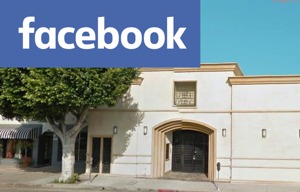
I. Summary
A. Details of the Sanctuary/The Shabbos. Moshe transmitted to B’nei Yisroel the details of Hashem’s commands relating to the Sanctuary and its contents, but first emphasized the holiness of the Shabbos, on which no work was allowed.
B. Contributions for the Sanctuary. When asked to contribute towards the construction fund for the Sanctuary, B’nei Yisroel responded most generously, each individual donating what he or she could. Woman with the requisite skills spun the linen material. Princes of each tribe offered precious stones for the breastplate, as well as oils and spices for the incense. Some woman even donated their mirrors of burnished cooper for the creation of the laver and its base.
C. Betzalel and Oholiav. Moshe made specific mention of the fact that Hashem had singled out Betzalel of the tribe of Yehudah, a man of wisdom, understanding and experience, to supervise the details of the construction. He was aided by Oholiav of the tribe of Dan, who was a talented engraver and weaver.
D. Donations for the Sanctuary/Building of the Sanctuary. The gifts for the building of the Sanctuary became so plentiful that the workers were able to report that they had more materials than they needed. Soon, section by section the Sanctuary and its contents began taking shape. The people were then asked to refrain from donating additional items.
II. Divrei Torah
A. Lil’Mode U’lilamed (Rabbi Mordechai Katz)
1. Shabbos. Shabbos is one of the mainstays of Judaism. It provides an aura of holiness for our mundane lives, and provides a peak for the activities of the week. Yet, throughout history, they have been those who have scorned the laws of Shabbos, claiming that they are too restrictive or irrelevant. After all, they ask, if Shabbos is a day of rest why is watching tv or other restful activities prohibited? Of course, the basis for observance of Shabbos is the verse in the Torah stating, “and He (G-d) rested on the Seventh Day from all His work which He had made.” Why did G-d find it necessary to rest? Isn’t He all-powerful? Therefore, how could He possibly become fatigued? Obviously, then, Hashem wasn’t required to rest in any physical sense. What the Torah means is that Hashem paused from the basic work of creation on the Seventh Day, for the world had already been created. The Seventh Day was one which Hashem set aside for admiring his creations and considering the earth in its totality. In this way, Hashem set the standard for humans to sanctify the Shabbos as a day on which to turn away from earthly concerns and instead view life in its totality. What is life for, and how can we elevate ourselves spiritually? It is for reason that creative work, such as the type of work performed in connection with the Mishkon, is banned on Shabbos. Shabbos is a day to acknowledge Hashem’s creation of, and mastery over, the world. It is, therefore, a day which one should devote to prayer, learning, and family togetherness, rather than mundane matters. We have six days during which we can worry about business and other matters. We can set aside one day to reflect upon the purpose of all of our efforts. This one day, then, is Hashem’s day, during which His holiness will permeate our thoughts and actions.
a. There are also those who insist that one can’t survive financially if he or she refrains from working on the Shabbos (and Yom Tov). Those who choose to observe the Shabbos (and Yom Tov) understand the lesson of the following parable: A man was riding his horse down a long, winding road when he noticed an elderly man crunched under the load of an obviously heavy package. “Would you like a lift,” the rider asked? The old man readily agreed and mounted the horse, yet he didn’t remove his heavy backpack. After observing the man for a while, the rider asked him, “Why don’t you remove your heavy bag and place it on the horse?” The old man shook his head, and said “You were nice enough to pick me up. How can I impede your trip by placing such a heavy burden on your horse?” “Don’t worry,” responded the rider, “the horse is bearing the weight of the burden whether you place it on his back or yours. You may as well make matters easier for yourself and place it directly on the horse.” Likewise, we should have enough faith in Hashem to allow Him to bear all of our burdens during the Shabbos. After all, it is He carries us the rest of the week! There is no need to worry that if one observes the Shabbos, he or she will suffer financial losses. In the long run, the Shabbos observant Jew has only to gain from his/her faith in Hashem. (As Tehillim 37:3 teaches, “he who delights in the Shabbos is granted his heart’s desires.”)
2. The Women’s Jewelry. As mentioned earlier, the Golden Calf was fashioned from jewelry solicited from the Jewish women. However, the Torah indicates that the collection of such jewelry was not a simple matter. On the one hand, we find Aharon suggesting that the women donated their jewelry for the Golden Calf. On the other hand, however, we see the men handing the jewelry over to Aharon; this implies that the women did not give their jewelry willingly and that the men took it by force. Obviously, the women were most reluctant to contribute anything for the service of idol worship. As a reward, the women were given the opportunity to contribute first towards the construction of the holy Sanctuary. They did so willingly, donating their best jewelry with impressive zeal (in obvious contrast to their unwilling participation in the construction of the Golden Calf). This time they knew they were assisting a worthy cause, and they were most eager to offer their jewelry.
B. Wellsprings of Torah (Rabbi Alexander Zusia Friedman)
1. Shabbos and Loshon Horah. “And you shall kindle no fire through your habitation on the Shabbos day.” The Shabbos is a day of rest, on which we desist from discussing business and other matters and often instead discuss communal affairs and our friends, family and others. This is why be are admonished to “kindle no fire” — that is, we must not mar the rest and sanctity of the Shabbos by talking loshon horah (gossip) about others. (SheLaH HaKodosh)
2. Don’t delay in fulfilling your good intentions. “Every wise-hearted person among you shall come and make all that the L-rd has commanded.” If you wish to fulfill a commandment, do it with dispatch. Spending time discussing your intentions may impede action. This verse reminds us to immediately turn our resolve into action. (HaDarsh VeHaEyun)
C. Peninim on the Torah (Rabbi A.L. Scheinbaum)
Serving Hashem to the best of your abilities. The Midrash notes the various “partnerships” involved in making both the Mishkon and the Holy Temple. Regarding the Mishkon, it is stated that Betzalel of the tribe of Yehudah and Oholiav of the tribe of Dan spearheaded the work. The Midrash points out the significance of using an artisan from the tribe of Yehudah (the most exalted tribe) and a member of the tribe of Dan (the lowliest tribe). By placing them together, G-d taught us never to look with disdain upon one whose origins are not noble, for in Hashem’s eyes the great and the small are of equal stature. A less gifted person who serves Hashem will all of his/her capabilities ranks equal to one who is more gifted, for Hashem judges a person in accordance with the intention of his/her heart.
D. Growth Through Torah (Rabbi Zelig Pliskin)
1. When giving a monetary donation, involve your heart. “Whoever is of a willing heart, let him bring it, an offering of the Almighty.” Rabbi Simcha Zissel of Kelm explained this verse to mean that those who brought offerings to the Sanctuary should bring their hearts along with their offerings. It isn’t sufficient just to give a monetary donation; Hashem wants our hearts, that is our thoughts and emotions. They, too, should be an expression of our generosity. When you give money to a charity or a worthy institution, you help the cause to which you are giving. But when you give your heart as well, you are changing an element of yourself; each such donation makes you into a more giving person. When you give, reflect on what you are giving.
2. Increase your initiative and you will accomplish much. “And each person whose heart motivated him came.” Ramban states that they needed motivation from their hearts because there was no one who had any previous experience with the skills necessary for the Mishkon, and there were no teachers available to train them. But, there were people who had the courage to come before Moshe to tell him, “I will do all that you say.” Rabbi Yeruchem Levovitz commented that the Torah is noting that the people who were successful in building the Sanctuary were successful because of their inner courage to come forward and volunteer to do what was needed. We must be aware of the moments in our lives when we felt a strong desire to accomplish spiritual greatness. We must let those memories motivate us to have even more initiative for true accomplishments and the courage to do what is needed. One who has a strong desire to accomplish something will find that he/she has many talents and abilities that would have remained dormant had he or she lacked that drive.
3. Share your knowledge with others. “And he put in his heart to teach.” There are people who have special knowledge and skills but do not want to share them with others. Therefore, the Torah praises Betzalel because he was willing to share his knowledge with others. (Ohr HaChayim) If a person realizes that his/her knowledge is merely a gift from Hashem, he/she will readily pass them on to others. He/she will want to accomplish the most that is possible, and if more people have that special knowledge more will accomplished.
E. Majesty of Man (Rabbi A. Henach Leibowitz)
Controlling our emotions. As noted above, Hashem selected Betzalel to construct the Sanctuary. Betzalel’s grandfather, Chur, was killed trying to dissuade B’nei Yisroel from building the Golden Calf, for which the building of the Mishkon was meant as an atonement. Hashem deemed it especially fitting for Betzalel to fashion the Mishkon. Why? Wasn’t Betzalel a poor choice for the job? After all, he surely must have felt some hatred towards B’nei Yisroel for the slaying of his grandfather. Such hatred should have interfered with his ability to act on their behalf and for their benefit with the level of purity of intentions necessary. Nevertheless, the Midrash tells us that the Mishkon was never destroyed, only hidden, because it was holy, without any impure motives involved in its construction. How was Betzalel able to attain this level of purity of heart and block out all feelings of vengeance and hatred, and fulfill his assignment with total holiness? He used the tremendous energy inherent in every person to overcome the formidable barrier of vengeful feelings. Rabbi Moshe Chaim Luzzato in Mesilas Yesharim discusses the intensity of the emotion of revenge. He tells us it is one of the hardest emotions to control because revenge is man’s only comfort towards one who has wronged him. Yet, man was designed by Hashem to fulfill the specifications of the Torah, the blueprint of creation. If the Torah commands us not to take revenge, then man by definition is endowed with the capability to meet the challenge. It took nearly superhuman strength for Betzalel to totally put aside the negative feelings he had towards B’nei Yisroel. Yet, he summoned that power within himself and succeeded in fulfilling his objective. The love for his brethren possessed by his grandfather Chur that compelled him to risk his life by trying to stop the Jews from sinning was inherited by Betzalel. The special feeling for his brethren was what made Betzalel uniquely suited to build the Mishkon. We often feel that our emotions control us; in actuality, we can master our emotions. We are created in Hashem’s Image and have capabilities of self-control far beyond those commonly attributed to us. The lesson Betzalel teaches us is that we can even take on our strongest emotions and totally remove them from our conscious and subconscious minds. At the same time, this heightens our obligation to use that potential. Fulfilling this obligation is a means towards the most holy of ends — bringing peace to the world.
F. Living Each Day (Rabbi Abraham Twerski)
Enthusiasm for mitzvos. In this Parsha, we read of the various donations of materials that the Israelites made to provide for the construction of the Sanctuary. The leaders of each of the tribes donated the precious gems for the breastplate of the High Priest. Rashi notes that Hebrew word for “leaders” is lacking a vowel, and that this omission designates that there was a flaw in their gift. What was the flaw? They said, “Let all the people make their respective donations, and whatever is lacking we will then provide.” Why was this a flaw? Wasn’t it reasonable and praiseworthy to agree to underwrite whatever was lacking? Yes, says Rabbeinu Bachya, but if one has the opportunity to be first in the performance of a mitzvah, and delays for whatever reason, that indicates a lack of diligence and zeal and for that the leaders were chastised. One can be first to respond to community or individual needs, or one can wait to do so at a later point. All of these actions are indeed meritorious whenever they are done, but the degree of diligence and enthusiasm reflects the quality of one’s commitment.
G. D’rash Moshe (Rav Moshe Feinstein, z’tl)
Public Affirmation. “And Moshe assembled the entire Congregation of the Children of Israel and he said to them: These are the words that Hashem commanded, to do them. Six days shall labor be done and on the seventh it shall be holy for you, a Shabbos to Hashem.” Why did Moshe call the people into assembly especially to give them the mitzvah of Shabbos? There is a lesson here. Just as the mitzvah of Shabbos, which is a sign of Hashem’s eternal covenant with Israel, need an assembly to publicize it, so too, all other “signs” of Hashem’s covenant should be done in public. This is reason, for example, that a bris is normally performed at a festive gathering. It also explains the custom that everyone calls out loudly immediately after the circumcision that “just as he has entered into the covenant, so may he enter into the Torah, chupah and good deeds.” Apart from giving a blessing, this formula proclaims the terms of the covenant between Hashem and the newly circumcised infant/his parents. Namely, his parents are expected to teach him by learning Torah and by marrying and raising a family in the way of the Torah and good deeds.
H. Reb Michel’s Shmuessen (Rabbi Michel Barenbaum)
The Shabbos’ Sanctity. Rashi explains that although the commandment to observe the Shabbos was part of the 10 Commandments, it was repeated here to remind the nation that even the construction of the Sanctuary did not override the laws of Shabbos. The ramifications of Rashi’s understanding are truly astounding — even though the Sanctuary provided a resting place for the Divine Presence in this world from where Hashem’s glory would radiate outward and fill the entire world with knowledge of Him, the laws of Shabbos still took precedence! This concept merely enforces what every Jew instinctively feels inside — that Shabbos is not merely an abstract idea, but a great spiritual entity which is itself an “abode” for the Divine Presence. Thus, since Shabbos was created before the Sanctuary, it is fitting that it take precedence. How is Shabbos an “abode” for the Divine Presence? The answer lies in Sforno’s commentary where he explains why the commandment to construct the Sanctuary came after the sin of the Golden Calf. Sforno explains that prior to this sin, the Jewish People were capable of adhering to the Divine Presence wherever they choice. Following the sin, however, they lost this supreme level of spirituality — this additional soul — and it became necessary for them to build a confined structure in which the Divine Presence would reveal Itself to them. Shabbos shares similar qualities with this unlimited spiritual relationship the Israelites had with Hashem prior to the Golden Calf. Shabbos is a conduit of spiritual force allowing any Jew to adhere to the Divine Presence, regardless of his or her location.




 Visit the group and request to join.
Visit the group and request to join.
